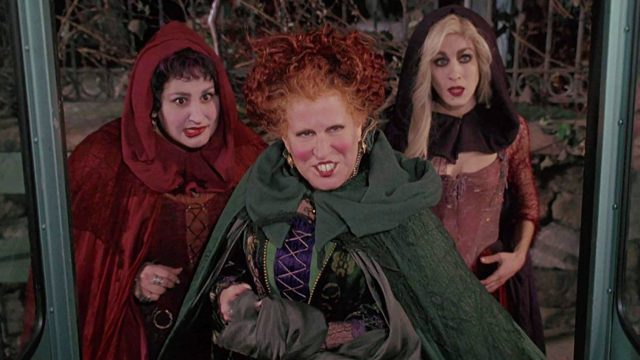There are a lot of standard monsters to Hollywood. Not just the Universal ones, though they are all archetypes of the classics. However, what Universal never did, so far as I know at least, is a witch. Goodness knows everyone else has, though. The witch is probably the most common Disney villain, of one sort or another. (That’s what happens when you base your brand on fairy tales.) Witches also appear quite a lot in horror movies and children’s movies from other studios. The problem is that the witch is probably the villain with the closest ties to reality, and we never really acknowledge those ties—and how dark that aspect of history is.
While the idea of an enchanter goes back probably as far as imagination and communication, most of the Hollywood movie tropes tend to be from about the seventeenth century. Not even the Middle Ages. In the US, our roots of fictional witchcraft primarily grow out of Salem. In many cases, the fictional town the characters are from is a play on Salem; sometimes, they are actually supposed to be in actual Salem, Massachusetts. They are almost always real witches in the story.
The problem, of course, is that Salem is one of the earliest examples of the failure of the rule of law in what would become the United States. The causes of that particular miscarriage of justice are varied and complex. I don’t tend toward the ergot explanation, as the “symptoms” of the accusers were likely to occur on command rather more than they would have if it had an organic cause. It’s possible, I suppose, that the initial outbreak was ergot and that the symptoms were then duplicated by people using it for their own purposes, but it seems apparent that a lot of what was going on was about control, property, and other factors.
In fiction, with the obvious exception of The Crucible, witches are always actually harmful before they die. About the only purely fictional version of the history of witch trials in the Massachusetts Bay colonies wherein the victim was the supposed witch is in Paranorman, and even there, she tries to take her revenge after death. And she’s a literal child, something the town has apparently forgotten in the centuries since she died, and she’s seen as a force of pure evil by most of the town.
It would be wrong to refer to the witch trials as religious persecution; in the US, the victims were generally members of the church that put them on trial. Modern Pagans often try to connect themselves to the victims and say that they were “really” Pagans, but they weren’t. They may have had disputes with the leaders of their church, or other people in it, but if you asked them, they would definitely tell you they were Christian. The victims were outcasts, often—modern feminism has a better claim on some of them than modern Paganism, because independent women were a common target. Women who wouldn’t do what the leadership wanted them to. Black Lives Matter can certainly claim Tituba, a victim because of her race.
When we make the witches the villains in the story, we are siding with the witch hunters. With the persecutors. Possibly horror movies have been made where the villain is the community, the blind fear that created the persecution. It seems more common, however, that the villains are the witches, who are really witches and really want to cause harm in some way. We allow the persecutors of three centuries gone to control the narrative. Acknowledging that innocent people were killed out of an unreasoning fear and/or a desire for sociopolitical control is scarier to me.
Contribute to my Halloween decoration fund by supporting my Patreon or Ko-fi!

